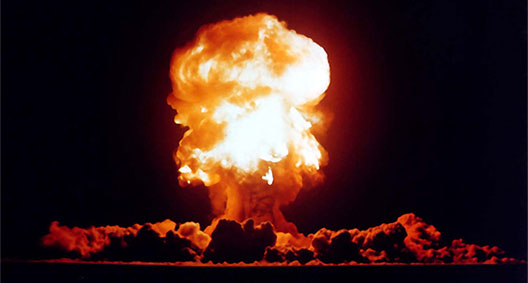
The Global Treaty Banning Nuclear Test Explosions is Increasingly at Risk
Five years ago this month, President Obama won international applause for his landmark speech in Prague calling for a world free of nuclear weapons – a commitment intended as a central organizing principle of his national security framework. But progress on that “Prague Agenda” has stalled, nowhere more clearly than in the Senate’s failure to consent to U.S. ratification of the Comprehensive Nuclear Test Ban Treaty (CTBT).
That failure has reinforced hesitations on the treaty in other countries and is potentially jeopardizing a 16-year-old de facto moratorium on nuclear testing (broken only by North Korea). It is time to recognize that the US failure to ratify the CTBT is slowly eroding international support for this moratorium and increasing the chance that other states could re-start nuclear testing. CTBT supporters must act to take some creative steps to preserve the de facto moratorium and revive progress on bringing the treaty formally into force.
Since Obama’s promise in Prague to “immediately and aggressively pursue US ratification” of the CTBT, the administration has worked persistently to build domestic support for the treaty and awareness of the national security benefits it offers. It has fallen short in this endeavor, partly because of the partisan polarization in Washington, which has stymied much of President Obama’s agenda and has afflicted the Senate’s attitudes towards treaty ratifications. Although the administration persuaded the Senate to ratify the New START agreement in 2010, it has failed to make headway on other treaties – even seemingly innocuous agreements like the United Nations Convention on the Rights of Persons with Disabilities. It should be no surprise that Senate Republicans have expressed little enthusiasm for the CTBT, given the memories of the acrimonious 1999 debate that resulted in an initial rejection of US ratification.
A second obstacle is that seven other states with an acknowledged ability to conduct nuclear tests have failed to ratify (and in some cases to sign) the treaty. As of this month, 183 states have signed the CTBT, and 162 have proceeded with ratification. Despite this overwhelming endorsement by the vast majority of the international community, the treaty cannot enter into force because the United States and these other “Annex II” states are holding out. To ensure that a functioning treaty would include all states capable of testing nuclear weapons, the CTBT’s drafters inserted a provision allowing it to enter into force only when all forty-four such states (identified in Annex II) ratified it. Thirty-six of those states have done so, leaving the United States, China, Israel, Egypt, Iran, North Korea, India, and Pakistan as the obstacles. The last three states on that list also have not signed the treaty. Although the Obama administration has encouraged other Annex II states to proceed with ratification without waiting for Washington, none has shown any propensity to take the first step. (Indonesia, which was on this list, did ratify the CTBT in 2011.) The inaction by Washington and the seven other states has become an Alphonse-and-Gaston routine in which US skeptics of ratification use the other states’ inaction as a reason to continue sitting on their hands.
This continued delay in bringing the CTBT into force is dangerous for two principal reasons. First, although states (with the notable exception of North Korea), have observed a de facto moratorium on nuclear tests since 1998, the odds of seeing it erode will increase with time. In particular, India and Pakistan may benefit from resuming tests to enhance the reliability and sophistication of their nuclear deterrents. Second, governments are growing increasingly reluctant to fund at the necessary levels the institutions that are laying the groundwork for the day the treaty enters into force – especially the multilayered verification apparatus to detect any cheating. Without effective mechanisms to verify nuclear tests, a treaty that has entered into force will be toothless.
Accordingly, it may be time for those states which have already signed and ratified the treaty to consider alternative steps. Opening up the treaty text to revise the procedures for formal entry into force is probably unwise – it opens the door to other potential amendments that could damage the treaty’s efficacy and credibility. Instead, nations may choose to pursue a provisional implementation of the treaty. It is unclear exactly how this could be pursued legally, but one option involves a United Nations Security Council resolution to transform the CTBT Preparatory Commission and the Provisional Technical Secretariat into permanent institutions, enabling them to operate on an indefinite status even if the treaty does not formally enter into force. Although this procedure may appear largely symbolic, it could bolster the resolve of nations to continue sufficient funding for the International Monitoring System, the cornerstone of the treaty’s verification regime.
The CTBT is at an increasingly uncertain crossroads. Those in the international community who recognize the importance of a permanent prohibition on nuclear testing must act now to mobilize creative thinking on how to preserve the de facto moratorium while accelerating progress on the treaty’s formal entry into force. Otherwise, it is not a given that the treaty, and its associated institutions and emerging infrastructure, will survive into the next decade.
Jofi Joseph helped coordinate US policy on CTBT ratification as an official at the State Department from 2009 to 2011 and the National Security Council from 2011 to 2013.
Image: US nuclear weapons test in Nevada in 1957 (Photo: USG)
